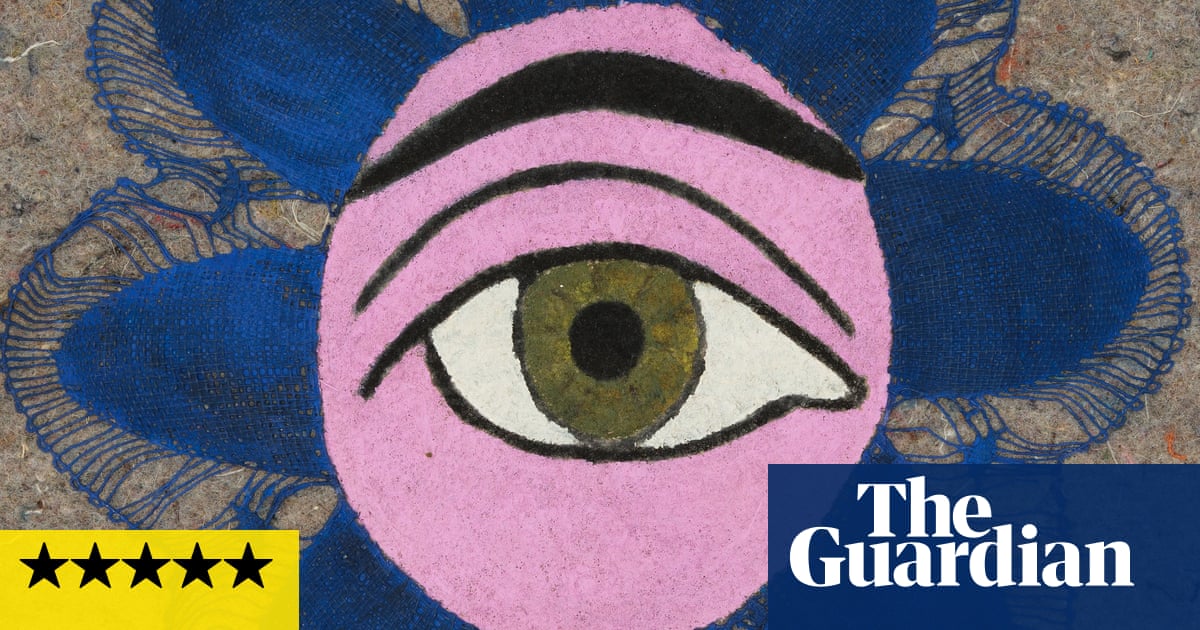
his revolutionary exhibition of the work of a forgotten genius is like being on a film set, with the actors right in your face, and the lights revealing who they really are deep down inside. Bodies rush towards you out of the canvas, anguished faces, huge hands, explosions of blood. It’s a thrill ride from beginning to end, a Scorsese film shot in 17th-century Italy’s meanest streets, and it starts with a blow right to the heart.
In 1610, the year she turned 17, Artemisia, daughter of the moderately successful artist Orazio Gentileschi, painted a blinding masterpiece in her bedroom. Susanna and the Elders lights a fire in your soul. Susanna sits naked on a grey stone seat, her left foot dipping into the clear waters of a pool she’s just bathed in. But as she rests there, two looming male figures force themselves into the confined space of the canvas. These creeps don’t just spy on Susanna, they push right up close to her.
It is a stunning work, probably the most powerful version of this biblical story ever painted – no small claim since there are Susannas by Tintoretto and Rembrandt. But Artemesia brings something unique to the story of a young woman molested by relentless male eyes– her own story. For Susanna is modelled on herself, her body, her vision. She’s painting this with a mirror in her room. This is a selfie from hell.
This is the most thrilling exhibition I have ever experienced at the National Gallery. The sensational Susanna makes its first room so dazzling the show has already, in a moment, done its job: to prove Artemisia’s greatness. It makes you ponder why that was ever in question. Born in Rome in 1593, dead in Naples by around 1654, this brilliant woman had gifts that were recognised by her contemporaries. Her father boasted in a letter: “This girl, as it pleases God, I would dare to say she has no equal.”
She barely does. The National Gallery makes that plain. This show is a heroic act of resurrection by curator Letizia Treves, who has managed, in the face of the pandemic, to bring together all of Artemisia’s important paintings. We see her entire. It’s like being hit by a train.
So, given her talent, was it all easy? Did her father’s letter secure her a court job that let her develop, like Mozart, from prodigy to mature star? In her dreams. In reality, the life of Artemisia became one long lesson in why she was supposed to know her place. This exhibition lays out the brutal facts alongside the devastating art. Next to Susanna and the Elders is a timeworn manuscript opened at a page of neat notes. This is part of the original transcript, lent from Rome, of a trial held in 1612 by the Pope’s court. Orazio accused another painter, Agostino Tassi, of raping Artemisia. This document reports how Artemisia voluntarily underwent torture to prove she had not invented Tassi’s monstrous attack. “It is true, it is true, it is true,” she repeated as cords were pulled tighter and tighter round her fingers.
Tassi was found guilty but escaped punishment because the Pope liked his paintings. Today almost no one knows them. How did Artemisia feel about that? The answer is in the exhibition’s next room, where both versions of her mightiest composition hang side by side, stunningly reunited after centuries. They depict the story of Judith, an ancient Israelite whose city was being besieged by the Assyrian general Holofernes. While men quailed, she infiltrated the enemy camp and got Holofernes drunk. Then she cut his head off. In Artemisia’s gleefully violent rendering she is helped by her servant, who looks more like an equal. These two muscular young women manage to hold down the immense Holofernes, whose eyes are open as he watches his own death unfold. Then, in the second of the two paintings, they do it all again.
Artemisia’s first version of Judith and Holofernes, which hangs on the left and has been lent by the Capodimonte Museum in Naples, was painted soon after she was raped. It is a visceral work of revenge by art. She imagines in acutely realistic detail what it would take for a woman to murder a big brute like Holofernes. As the servant clambers on top of him to hold him down, you see his raised fist close to her head. It is as big as her face – a disturbing disproportion that hammers home the sheer physical power of this thug and how hard it is for women to defeat him.
Why did she paint this gory execution a second time? The painting to the right is less raw, more accomplished. It was commissioned by the Grand Duke of Tuscany and has been in Florence ever since. It’s a magnificent hallucination. A richly jewelled bracelet now shines on Judith’s strong arm as she slices into her victim’s neck. Blood spurts out in a crimson baroque fountain. The arcs of blood are very careful studies. Fascinatingly, Artemisia was friends with the scientist Galileo. Her blood spurts are mapped as precisely as his studies of cannonball trajectories. She is expert in the ballistics of blood.
Artemisia’s life was a chaotic battlefield when she painted this. While trying to make a career in Florence, she had five children, only one of whom survived. Some of her love letters, discovered just a few years ago, are exhibited here. They are not to her husband but to a noble Florentine citizen, Francesco Maria Maringhi. The National Gallery is touchingly chivalrous, only translating some of the more romantic passages. In fact, as I found in researching a biography of her, the letters reveal a desperate reality, the gilded gutter life of Artemisia – she’s in debt, hounded by the Medici bureaucracy, and does a flit back to Rome. She’s got a filthy mouth: a woman she’s fallen out with is labelled a “puttana”, a sex worker. And she writes about her passionate need for revenge.
Vendetta is a right. Honour demanded it in this world – if you were a man. But Artemisia claimed the same right on canvas. The theme of an audacious woman and her accomplice carrying out a just murder keeps returning in her art. She’s scratching at a wound. In a gorgeous painting, lent from the Pitti Palace in Florence, Judith and the servant Abra are again sisters as they carry the severed head of Holofernes in a basket. They look back warily in case they’re being followed.
Later, in Rome in the early 1620s, she paints them inside the slain enemy’s tent. Only one candle illuminates the night, revealing red velvet hangings in the gloom as Judith’s face is almost entirely covered by a black shadow. Only a moon-like crescent of skin is lit in the warm buttery glow. But down below, like a thudding reminder that nothing will ever be normal again, is the awful grey severed head of the man she killed.
In a painting nearby, a woman hammers a tent peg into a man’s skull with pounding determination. You can argue, as some academics do, that it’s “problematic” to interpret Artemisia’s art as a response to her life. But she makes us see it that way. She returns insistently to the same themes: male voyeurism, female revenge. Next to that glowing Judith and Her Maidservant With the Head of Holofernes hangs another version of Susanna and the Elders. Painted in 1620s Rome, where the baroque was blooming, it’s set among what could be the garden of one of the new palaces. Its pathos hits you as the men creep close once again. Your eyes are drawn from the nude woman’s beauty to tears of anguish in her eyes.
Great art stays great for ever, even when we don’t love it enough, which is why museums are so important. Down the centuries, these paintings have been cared for in collections like the Uffizi and Capodimonte. So they are here now for us to rediscover. But cultural shifts make art look different. This year is the 500th anniversary of Raphael’s death, but no one will ever care as much for Raphael’s perfect art as grand tourists in the 18th century did. That was the age when Artemisia was forgotten alongside Caravaggio, whose cutting realism influenced hers. In the mid-20th century both Caravaggio and Artemisia were rediscovered by the great Italian art historian Roberto Longhi and his wife Anna Banti, who wrote a classic neorealist novel called Artemisia.
Caravaggio’s cinematic light struck a modern chord and today it’s hard to imagine a time when he was not one of the most famous artists in the world. But Artemisia went on struggling. What has kept her out of the limelight? Nothing short of snobbery and misogyny in the highest echelons of the scholarly art world, among sniffy connoisseurs who thought it clever to say she was just a minor pupil of her father’s. I’ve read catalogues that subtly disparage her, studious articles that supposedly put her in her place.
That’s why the National Gallery – especially Treves but also its director Gabriele Finaldi – deserve so much praise for finally ratting out the conspiracy of sneers and revealing Artemisia Gentileschi in her full staggering strength, with a sword in one hand and a tent peg in the other. It is impossible to imagine, after this great show, that she will ever be cast down again.












